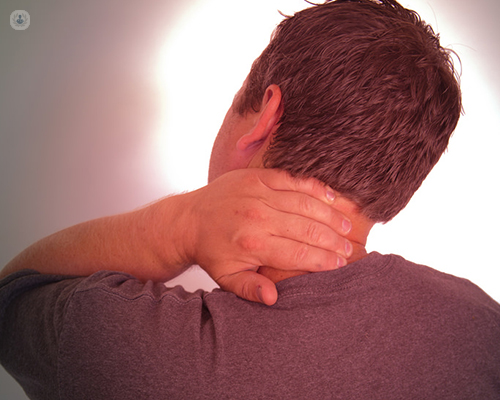

What is shoulder surgery?
Shoulder surgery treats injured shoulders by repairing the muscles, connective tissue, or damaged joints that occur from traumatic injury, or from where the shoulder has been overused. The shoulder is the most flexible joint in the body, allowing the arm to be placed and rotated in many positions in front, above, to the side and behind the body. This degree of movement makes the shoulder susceptible to injury.

Shoulder problems that require surgery
- Bursitis or tendinitis
- The rotator cuff can cause pain in many different ways, which includes tendonitis, bursitis or mechanical impingement. These are due to repetitive activities such as swimming or weightlifting. The repetition causes rubbing or squeezing of the rotator cuff under the acromion and in the acromioclavicular joint.
- Impingement
- This occurs when the top of the shoulder blade puts pressure on the underlying soft tissues when lifting the arm away from the body. Symptoms of impingement include difficulty reaching up behind the back, pain when using the arm over the head and weakness in shoulder muscles.
- Full-thickness rotator cuff tears
- Full-thickness rotator cuff tears are often the result of shoulder impingement, partial thickness rotator cuff tears or they can occur from heavy lifting and falls. Rotator cuff tears may involve the entire thickness of the tendon or they may be incomplete, which is known as partial thickness. Rotator cuff surgery and rehabilitation allows patients to regain the lost function in shoulders with cuff disease.
- Instability
- One of the shoulder joints is forced out of its normal position. This condition can result in a dislocated shoulder. Patients will experience pain when they raise an arm and it may also feel like their shoulder is out of place.
Diagnosis of a shoulder injury
The doctor will discuss the medical history of the patient and then examine the shoulder. They will check to see whether it is tender in any area and whether there is a deformity. The strength of the arm will also be tested and the arm will be moved in different directions. Other tests that help with diagnosis include imaging tests, X-rays and MRI scans.
Non-surgical treatment of shoulder injuries
An orthopaedic surgeon will explain certain exercises that are aimed to strengthen the shoulder muscles, which will include wall push-ups and shoulder press-ups. They may also prescribe anti-inflammatory medication.
Surgical treatment for shoulder injuries
- All-arthroscopy repair – this allows the surgeon to insert a thin device with a small lens into tiny incisions to look inside the joint. The images are relayed onto a television screen, allowing the doctor to be guided and make a diagnosis.
- Open repair – in some cases, open repair surgery is necessary. It is done through small incisions, which are only a few inches and required if the tear is large. It is a good option if the tear is complex or if additional reconstruction, such as tendon transfer, is required.
